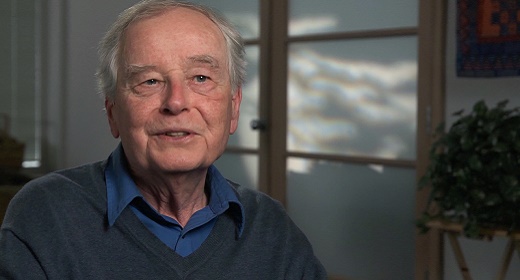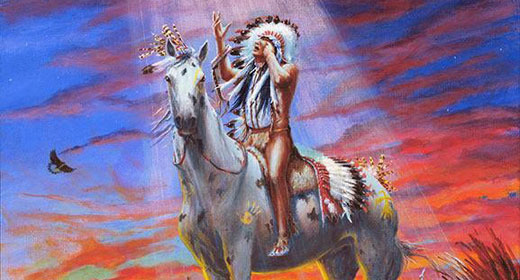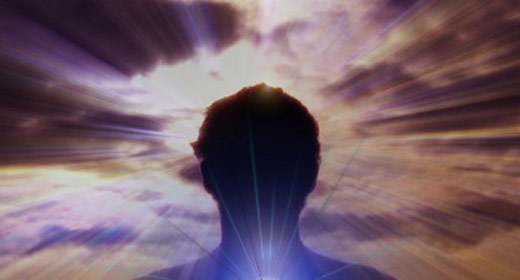Eyes look but cannot see it. Ears listen but cannot hear it. Hands grasp but cannot touch it.

Beyond the senses lies the great Unity— invisible, inaudible, intangible. —Tao Te Ching To understand the soul of the mandala is to gaze into the heart of truth and see the essence of reality. That truth is an intricate landscape of ebb and flow, light and dark, yin and yang—it is the Tao. The Tao as described by the Chinese since ancient days is the ungraspable essence of reality that flows on, inexorably, regardless of our own worries and concerns. The Tao Te Ching begins:
“The path that can be walked is not the eternal path.”
We may approximate an understanding of the totality of existence, but full and complete knowledge of it is unattainable. This limitation on our understanding stems from the fact that we are an inclusive element in the universe, and as such an integral part of everything we are tied in to the infinite sequence of cause and effect, action and reaction. Therefore we can observe the universe around us, we may even assemble an adequate description of the way that elements of the universe seem to behave. However, to achieve a complete understanding of how we fit into the picture we would need to move beyond our very existence in order to exclude ourselves from the equations we seek to form. This necessary separation is not simply a physical one, such as to sit on another planet and observe humanity through a telescope. It is a separation of levels of consciousness, of self-awareness. The phenomenon of consciousness is a result of natural universal phenomena, and so to use our consciousness to fully understand itself is impossible. It would be like searching for a red ball in a red room while wearing red-tinted glasses. We see everything through the lens of consciousness, and that lens can never be effectively turned back upon itself. Of course we can study our consciousness, and learn of its characteristics, its behavior, its potential, but we can never fully understand it, just as the telescope, no matter how powerful, can never find itself in its own limited field of vision.
The mandala is a visual lesson in the ungraspable totality of reality; its inherent variability is the unattainable truth of the Tao. Every mandala is an intimate portrait of the universe, and every mandala, with its infinite potential for variability, is different from every other. From this infinite variability we may shift our perception a bit and say that every mandala, in each of its widely-varied forms, is identical to every other. It is only our perception that changes, ebbing and flowing with the movement of the Tao. The universe is at once static and dynamic, placid and chaotic. It is an unchanging organism that never stops transforming itself. By conceiving of every mandala as identical to every other, despite the protestations of our conscious awareness to the contrary, we can come close to grasping the ungraspable, to imagining the unimaginable.
As with the universe, our experience with the mandala should be more of enjoyment than dissection, more appreciation than analysis. It is certainly beneficial to understand the physical workings of the world, but we must not lose sight of the majestic beauty that surrounds us. We should bask in the splendid glow of energy, in the dance of light and the radiance of the stars. We must look at the curves and the colors of the mandala, we must revel in its vibrant, flowing curves. We must listen to the birdsong, feel the smoothness of the stones, drink in the brilliance of the moon. We must stroll through the palace of life with our hearts and minds open to the harmony of its architecture. This is the essence of life, to take the truth of beauty into our spirit and to recognize the universe for what it is—breathtaking, wondrous and whole.
A core message of Taoism is to practice wu-wei, which can best be described as a policy of non-forcing. It is a call to recognize the flow of the Tao, the watercourse of existence, and to refrain from resisting its movement. The futility of battling the inertia of the universe should be obvious, yet that is precisely what we spend our entire lives doing. It is a struggle against an unconquerable force, a war that cannot be won. If we would only recognize the beauty in the never-ending evolution of the universe, we could appreciate the value of following its lead. Instead we create a picture of the world we want, and struggle to force the real world into this artificial mold. Somehow, in the course of our psychological development, we acquire certain values and opinions, and we take these as absolute requirements for a “proper” world. Of course, nothing could be further from the truth. Everything that we believe is relative and subjective, and what to one person is a critical sacrifice to the god of the harvest, to another is cold-blooded murder. The source of most of our stress and anxiety is the considerable difference between the way the world actually is and the way we think it should be.
We are forever looking at the world around us and judging whether or not it lives up to our personal criteria. This is a source of perpetual tension within us, and continual conflict around the globe. Instead we should see that all the people of the world are but facets of the universal mandala, and as such, different aspects of ourselves. Just as every mandala is identical to every other in its multifaceted potential, so are each of us as cells in the vast organism of Humanity, of the Universe. In our behavior we are all equally right and wrong, equally good and bad, equally holy, equally damned. And, like the mandala, we are all equally glorious, equally beautiful. This vast array of potentiality is the essence of reality. Its unimaginable variety, so far from the reach of the human mind, can be found within the elegant form of the mandala. We must seek the source of this variety, and strive to grasp its significance—in this way we can learn compassion and acceptance from the universe. Rather than force our individual agendas onto people that are different from us, we must appreciate those differences and learn from each other. This is the way of the universe, the way of the Tao. It is the lesson we learn, if only a little piece at a time, when we gaze into the heart of the mandala.
Peter Patrick Barreda is a mandala artist, occasional writer, chronic over-thinker, and webmaster of mandalaZone.com. He is fascinated by origins and causes, and the deeply-hidden reasons behind everything. He believes that mandalas are the underlying pattern for everything in the universe—physical, mental and spiritual, though at their core these three are essentially one. Please visit his fascinating website, where this article was originally featured.








































